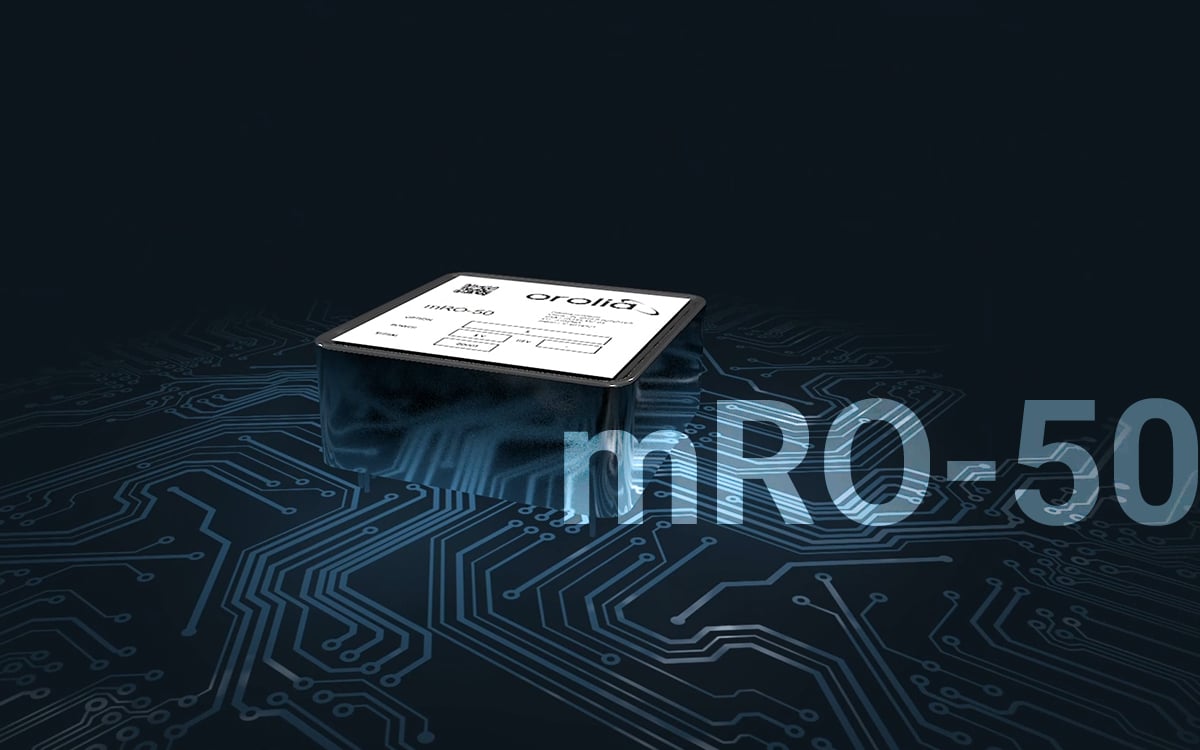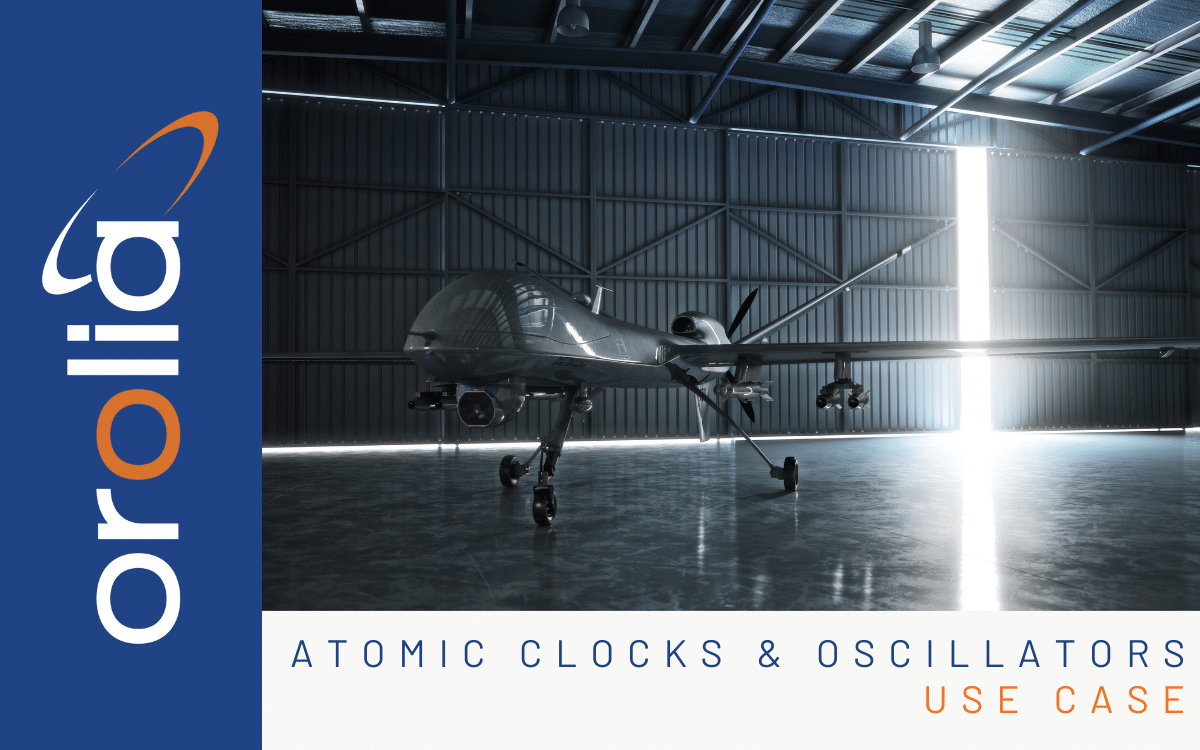
# Use Cases
Precise Time Stamping, Inertial Navigation, and Waveform Synchronization for UAVs
Problem We Solve
Unmanned Aerial Vehicles (UAVs) deployed in combat environments require a constant source of timing and positioning information either from satellite signals or backup sources to ensure continued operation and transmission of sensor data. These aerial vehicles usually use on an on-board clock that is synchronized to GPSGlobal Positioning System is a navigation satellite system. See also satellite signals.
However, losing the signals necessary for positioning and navigation, even momentarily, could become hazardous or jeopardize the mission. Therefore, a timing source backup needs to be in place to ensure the UAVUnmanned Aerial Vehicle. Remotely piloted aircraft commonly referred to as a drone. See also navigation system will continue to function normally before it can reacquire a lock with a satellite signal again. Ideally, the backup timing source should be able to last for extended periods of time while still maintaining the same level of accuracy as a locked phase.
Why it is Important
Modern UAVs are used for an increasing number of mission-critical applications. Whether for reconnaissance or defense, these UAVs need to transmit sensor data back to command and control centers or forces on the ground and their uninterrupted operation is essential for successful missions and situational awareness.
Often times, the UAVs have to fly in contested areas that may be vulnerable to signal attacks which can severely threaten their ability to receive satellite signals, making the need for a resilient time source even more crucial.
The DOD recognizes the growing need for secure, trusted unmanned aerial vehicles to directly support warfighters, especially for their ability to provide on-demand intelligence and reconnaissance capabilities in contested battle spaces.
How We Solve it
Orolia provides two solutions for UAVs that need robust timing sources. It depends on whether your UAV already has a GNSSGlobal navigation satellite system (GNSS): A general term describing any satellite constellation that provides positioning, navigation, and timing (PNT) services on a global or regional basis. See also receiver and inertial measurement component. If you already have a navigation system and you need a second, robust timing source to use during holdover events, then there is the Ruggedized MRO-50 Rubidium Oscillator. If you need all three of these technologies combined to operate onboard the UAV, then there is the VersaPNT. Let’s take a closer look at each of the solutions.
Ruggedized MRO-50 Rubidium Oscillator
The easiest way to guarantee that your UAV’s navigation system will receive a constant timing signal is to incorporate the ruggedized MRO-50. The ruggedized MRO-50 is a more robust version of the MRO-50 rubidium oscillator which provides an entire day of holdover with 1µs precision. Its extremely low-SWAP (Size, Weight and Power) form factor make it so that it can easily fit into any UAV model type and withstand intense vibration and temperature environments. Perhaps the most notable attribute of this tiny yet incredibly accurate atomic clock is that it draws only 0.36W of power, which is ten times less than existing solutions with similar capabilities.
The MRO-50 oscillator can also be used as time base for a UAV’s Inertial Navigation System. If the UAV loses a lock with the satellite signals and needs to revert to its INSAn INS or Inertial Navigation System - sometimes used synonomously with IMU is a device used to measure a vehicle's speed, position, velocity, heading and orientation by using an accelerometer and a gyroscope., the MRO-50 can reliably supply timing information to the INS.
Lastly, if your UAV needs to communicate with ground stations and transmit sensor data such as imagery or video, the Ruggedized MRO-50 has been field proven to deliver accurate time stamping via encrypted waveforms. This MRO-50 technology enables the constant synchronization and stabilization of those waveforms.
VersaPNT
If you need an entire Positioning, Navigation, and Timing solution for your UAV, then the VersaPNT is an ideal solution. The VersaPNT is designed to support UAVs that perform a critical task that requires a GPS backup – that cannot afford the risk of a system failure due to intentional or unintentional GPS interruption. The Ruggedized MRO-50 Rubidium Oscillator is what steers the VersaPNT and it is included in the navigation system. The VersaPNT combines a GNSS receiver, inertial measurement technology, and high performance timing oscillators to provide Assured PNTPosition, Navigation, and Timing: PNT and map data combine to create the GPS service. in GNSS-degraded and denied environments.
Why Choose Us
- Easy UAV Integration – Both the VersaPNT as well as the Ruggedized MRO-50 Rubidium Oscillator can easily be embedded into a UAV because they were designed to support mobile applications. The VersaPNT can sit on board the UAV, and the MRO-50 can be attached to a UAV’s existing navigation system.
- Resilient – By adding a secure, robust timing system that can be used for navigation and positioning in case GPS is temporarily lost, your UAV will be more resilient.
- Low SWaP-C – The MRO-50 takes up less than 51 cc of volume (about 1/3 of the volume compared to standard rubidiums) and consumes only 0.36W of power.
- Rugged – The Ruggedized MRO-50 and the VersaPNT are designed for harsh environments (IP67 rated).
- Field-Proven – The Orolia MRO-50 rubidium oscillator, plus the inertial sensors on board the VersaPNT have been rigorously tested for over 10 years.
Discuss Your Solution

 Related Resources
Related Resources
Related Resources



